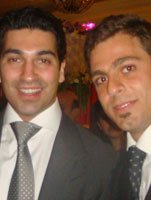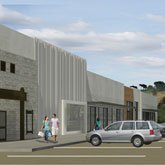Malibu's Retail Market Grows Hotter
On any given sun-splashed day in Malibu, Calif., shoppers can wander by the updated Malibu Country Mart and peek into the designer-fashion boutiques that sell the latest creations by Ralph Lauren, John Varvatos or Morgane Le Fay.
Or they can meander next door to the Malibu Lumber Yard, an airy upscale shopping center opened in 2009 on the site of Malibu Hardware, and lounge in chairs on the wooden deck or peruse high-end boutiques such as James Perse, Kitson and Alice + Olivia.
With upscale retail blooming like poppies in the city, which has many celebrity residents, the more than 40-year-old Malibu Village looks a bit like the ugly retail stepchild.
But that is about to change. Developers Pouya Abdi and Michael Shabani, who are the principals of Los Angeles–based Retail Holdings Group, will unveil a stylish renovation this summer of Malibu Village, one of the oldest retail centers in the wealthy colony. The developers bought the shopping center in 2007 and paid between $60 million and $70 million for it. Since then, they have been contemplating what to do with the property. “We rarely acquire something that looks like a trophy,” Abdi said. “But we turn these buildings into trophies.”
The L-shaped compound—home to the Hollywood Theaters–Malibu Cinemas, the art-inspired Free City fashion boutique, a shoe repair and dry-cleaning establishments—will undergo a $5 million facelift to give the 52,000-square-foot site a look inspired by another playground for the rich, The Hamptons, located near New York City.
Malibu Village’s promise of better things to come has already attracted some new tenants. Blue-jeans label True Religion opened a shop there Dec. 21, and Missoni announced it would open a space later this year. Jay Luchs, the retail center’s leasing agent, said next month he would announce several other high-profile stores in the center, where retail space leases for $12 to $18 a square foot.
When the new look is unveiled, Abdi said, the renovated Malibu Village will offer fashion sizzle as well as a place to get something to eat and wrap up some chores. It won’t be another Rodeo Drive, where the stylish buy gowns and suits. “People don’t shop for that in Malibu,” he said. “They want high-end bathing suits, great sunglasses stores.”
Malibu Village’s new look will employ the natural beauty of the area and add new character to old buildings. Los Angeles–based architects Marmol Radziner and Associates will take down the village’s strip mall–like storefronts and replace them with wood storefronts.
Some will be painted white; others will bear natural-looking wood hues. Marmol Radziner also will add a touch of green by building a 20-foot-by-50-foot green belt on what is now a parking lot near the back of the center. The green space adjacent to Cross Creek will allow shoppers to relax on the green belt’s benches and chairs by the creek.
Marmol Radziner is a known quantity in Malibu. In 2009, it designed the look of the Maxfield and James Perse stores at the Malibu Lumber Yard.Wooing residents
One tough issue will be pleasing the locals, who have hotly argued over the town’s retail character at city council meetings and in community newspapers.
After the Malibu Lumber Yard opened last year, Malibu resident and television star Dick Van Dyke fired off a letter to a local newspaper complaining he had to drive more than 10 miles to Agoura to buy a screwdriver and underwear because no basic stores were left in the city.
While it is still uncertain whether Malibu shoppers will embrace the renovated Malibu Village, Abdi and Shabani are relying on their proven track record as developers who establish boutique neighborhoods.
Real estate is in their blood. The young developers grew up in real estate families and own a number of buildings on Los Angeles’ high-profile fashion streets. Their buildings range from a 13,000-square-foot space on Robertson Boulevard that is home to Intermix and All Saints Spitalfields stores to a refurbished auto-body shop at 8150 Melrose Ave. In 2008, Ralph Lauren moved one of his Double RL boutiques there.
Shortly after they graduated with bachelor’s degrees in history from the University of California, Los Angeles in 2004, the two refurbished a building at 8400 Melrose Place in West Hollywood, Calif. Designer Marc Jacobs moved in, which set off a land rush of fashion houses looking for real estate in the Melrose Avenue/Melrose Place area.


























